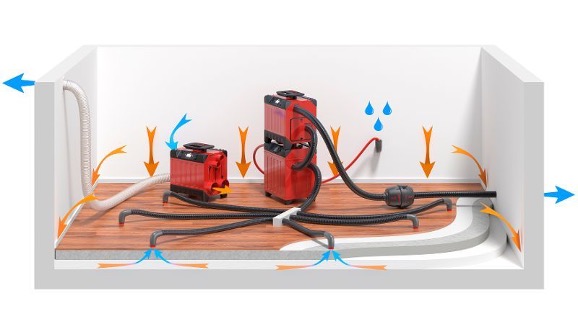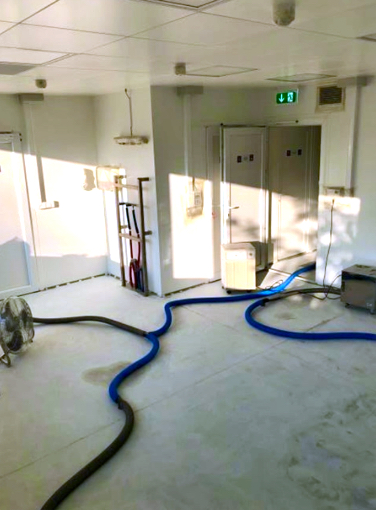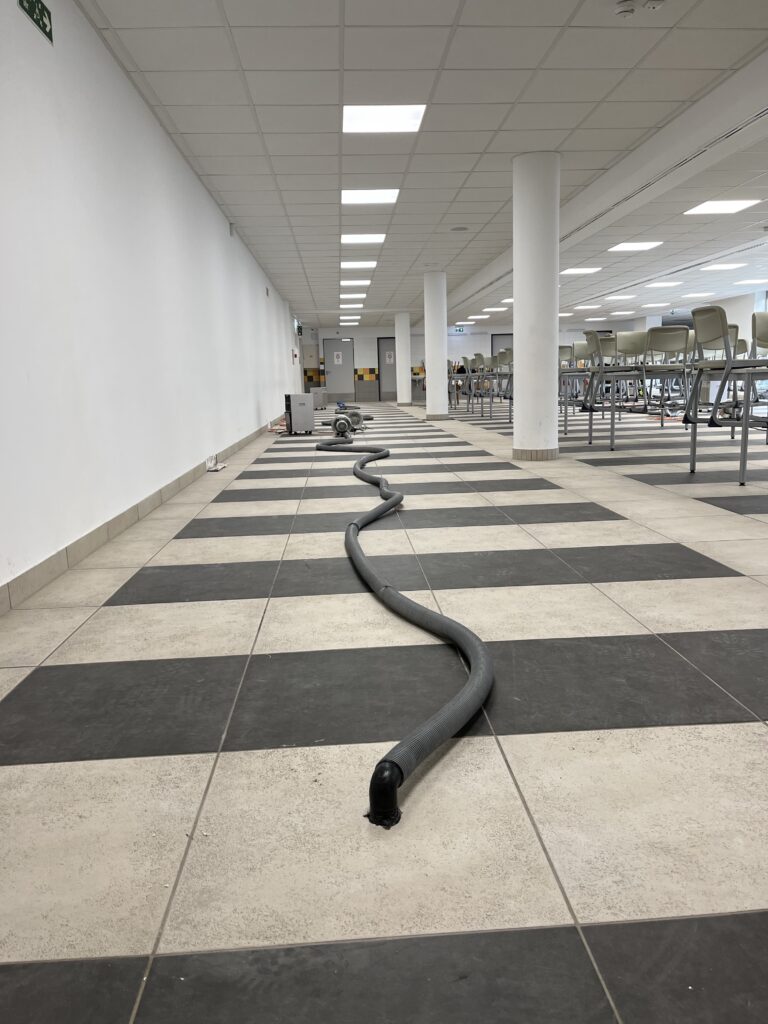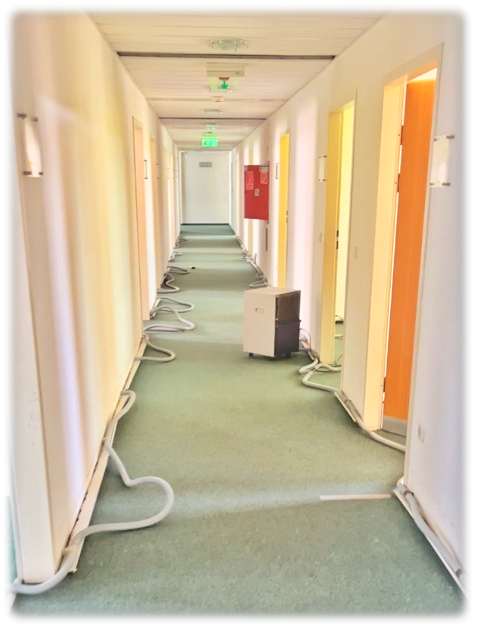Building drying
Technical drying and professional restoration after water damage.
In case of water damage, water from building elements often gets stuck in the floor insulation, penetrates the walls, ceiling, roof insulation, and layers.
Our goal
With a careful and professional approach, we prevent moisture-induced mold growth in buildings and avoid structural damage.

In case of structural water damage, it is not enough to use a dehumidifier, ventilation or heating.
First, the moisture trapped in the layering must be removed, then the steam.
Our drying technologies
During building drying, we use the most modern technologies and procedures.
Our trained professionals dry out damaged buildings quickly and efficiently, thus minimizing the spread of damage and the need for demolition and destruction.
With the help of our special drying systems, moisture and moisture meters, we precisely monitor the moisture level for optimal and efficient drying.
Based on our more than 10 years of building drying experience, you can trust us to provide a detailed and reliable building drying service and to help restore the building to its normal and safe condition.
Contact us with confidence! In the worst case, we come the best.
The natural drying time of water damage in buildings is very long (years) and the size of the damage increases continuously during this time.
As a result of the moisture, the wooden coverings, plasterboard and other mainly absorbent coverings in the building are damaged to a great extent.
The moisture in the subfloor concrete causes the biggest problem, because there is nowhere for the moisture to evaporate, so the insulation material (sound and heat insulation) lying between the two concrete layers loses all the properties for which they were installed there, it starts to rot and mold.
The walls are also damaged by moisture, there is a great risk that the plaster will peel off the brick wall and the wood paint along with it.
Building drying/wall drying one of themost important things to do after a water damage is to protect the structure of our property and in the future not to have problems with mold, falling plaster and parquet covered with humps and other unpleasantness caused by moisture.
Our company’s services provide a reassuring, safe, and quick solution to this problem, so that we can enjoy the comfort of our house/apartment again.
- Drying of base concrete
- Drying screed
- Drying insulation material
- Vacuum drying / water separation
- Drying of hollow walls and wall structures
- Drying of wood and hollow slabs
- Draining manholes and canals
- Drying flat roofs
- Building drying, wall drying
- Rental and sale of all types of high performance dryers
A water damage in a stone’s throw, be it a broken pipe, flooding, flooding caused by a neighbor, flood, etc. immediate action will greatly reduce the further extent of damage.
During the completion of buildings on time, it is essential in many cases to dry out structurally ready structures and buildings. In most cases, there is no time for the insulation materials to dry, the subfloor concrete and the screed.
For builders, completion on time and shortened construction time means money savings. By professionally drying the structural elements of the building, we can prevent the development of problems resulting from inadequate drying of ready-to-use, turnkey buildings, which can trigger a series of time-consuming and expensive troubleshooting processes.
-
- Pumping down and elimination of stagnant water
- Pipeline and new buildings, drying walls
- Screed drying and drying of insulating layers
- Drying of base concrete
- Vacuum drying / water separation
- Drying of hollow walls and wall structures
- Drying of wooden slabs and hollow slabs
- Draining manholes and canals
- Drying flat roofs
- High performance dryer rental and sale
A step that can shorten the construction time.
You can safely continue construction even in winter. In this case, the combination of drying and draining the building can be decisive, as the moisture released from the warm spaces settles in the colder parts of the building.
Heating the construction area speeds up drying and ensures tolerable working conditions even in cold periods. Depending on the conditions, the heating can be done electrically, with heating oil or gas.
Our team has many years of experience with the following heating options:
- Electric or gas heating
- Heating of raw and new buildings
- Heating tents and construction sites
- De-icing of pipelines
- Infrared heating
- Rental and sale of heating equipment





